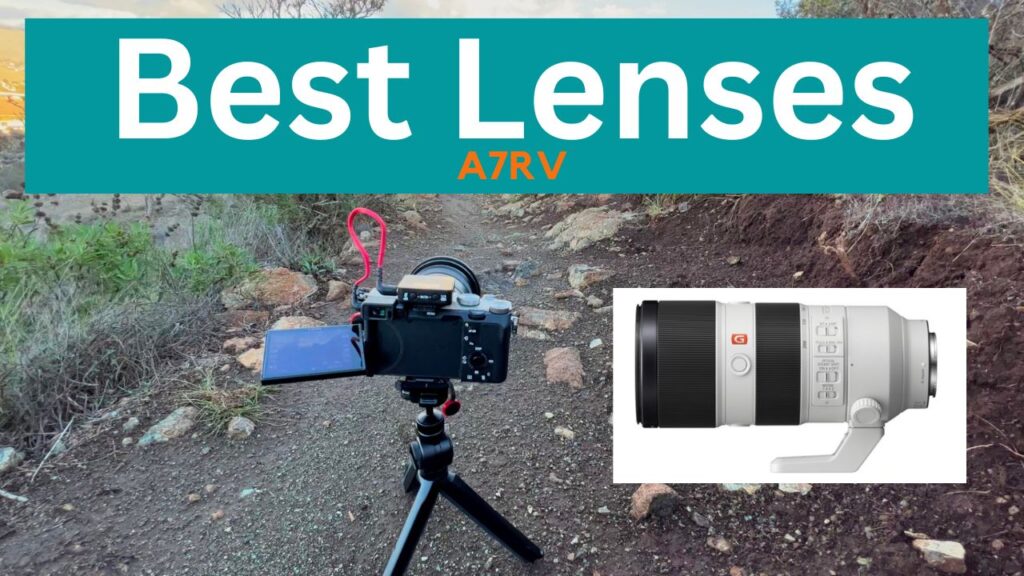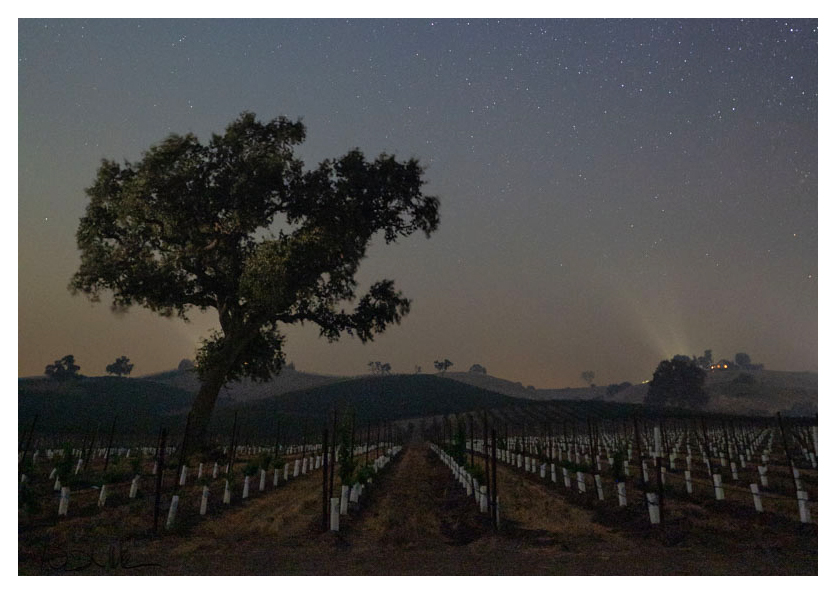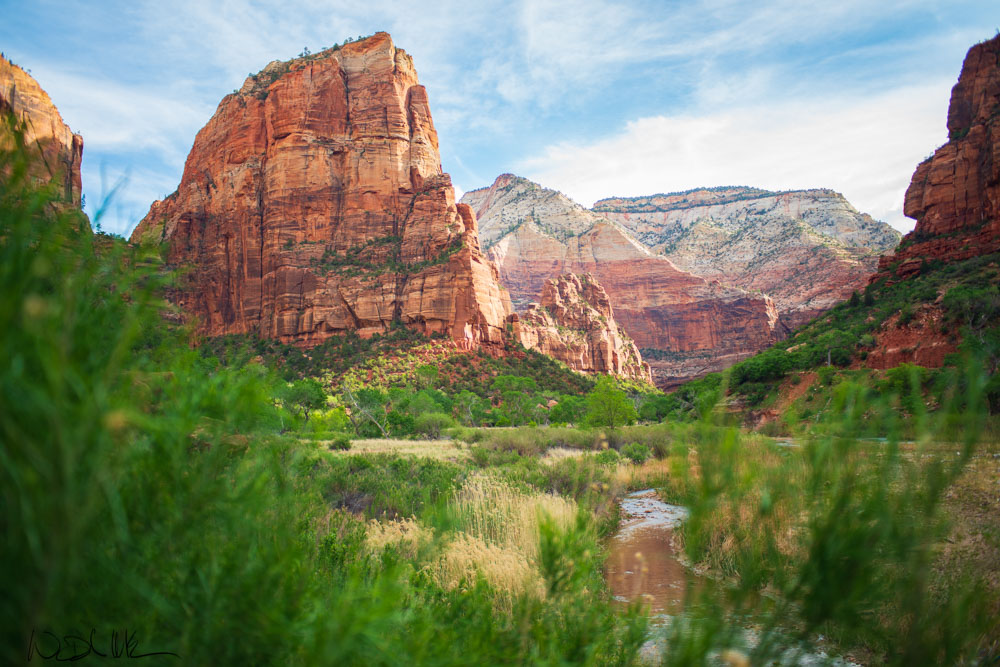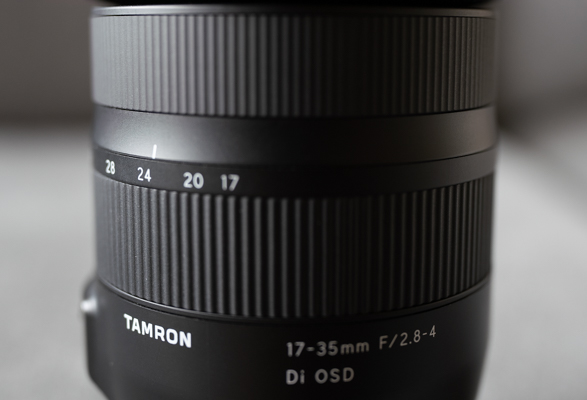It’s hard to find one lens that will do everything. Usually, when you only have one choice, the easiest option is to use a 35mm, so you can get wide shots but not too wide.
But with the new stabilization of the A7RV, you really should have a least one lens that supports in-body image stabilization, so you can ditch your tripod or gimbal. But which lens is best?
The bests 3 lenses for the Sony A7rV are the Sony 20mm 1.8, the Sony 24-70 2.8, and the 70-200 2.8 GM. Let me explain.
The best 3 lenses that will do almost everything
The Sony 20mm 1.8, 24-70 2.8, and 70-200 2.8 will work for film, landscapes, portraits, events, sports, wildlife, and astrophotography. Usually this list includes the 16-35mm 2.8, but it can add quite a bit of extra weight, and in most cases, you can get by with the 20mm 1.8 if you need a wider lens.
| Lens | Weight | Price |
|---|---|---|
| Sony 20mm 1.8 | 13 oz | $898 |
| Sony 24-70 2.8 ii | 2.59 lbs | $2298 |
| Sony 70-200 2.8 gm ii | 2.3 lbs | $2798 |
Best lenses for video
Most filmmakers don’t ever need anything wider than 20mm and with clear image zoom, you can change a lens like the 20mm 1.8 into a 40mm 2.8 without switching lenses.
If you need anything closer, the Sony 24-70 or Tamron 28-70 (budget) will give you everything you need.
But what about image stabilization?
Most wide-angle lenses don’t need image stabilization, and the IBIS on the Sony A7rV is good enough to provide gimbal-like performance.
Best lenses for landscape photography
The best two lenses for landscape photography on the A7RV are the Sony 20mm 1.8 and 70-200 2.8 because of the versatility with cropping and panoramas.

With the 61 megapixels on the A7RV, you can get 2x the reach by cropping and still have a great image. And if 20mm isn’t wide enough you can always shoot a panoramic shot by combining multiple images in one shot.
Now both of these lenses are expensive, and if you need a more affordable option, I would look at the Tamron 28-200 2.8-5.6 but it doesn’t offer stabilization, and that’s why I personally prefer the 2 lens setup.
You may wonder if the 28-200mm is sharp enough, and it’s plenty sharp, but the Sony 20mm 1.8 and 70-200 2.8 are unbeatable in sharpness.
Comparison 24-105 vs 28-200
Both the Sony 24-105 and Tamron 28-200 are very comparable in regard to image quality. If I had to compare them side by side, I’d give the edge to the Tamron.
But I always find that most of my landscape shots are usually at 50mm and above, and if you shoot landscapes, I would highly lean toward the Tamron 28-200 because of the added focal range by cropping in post.
With the 61 megapixels on the A7RV, you can get 2x the reach by cropping and still have a great image. And if 28mm isn’t wide enough you can always shoot a panoramic shot by combining multiple images in one shot.
You may wonder if the 28-200mm is sharp enough, and it’s plenty sharp, but there are sharper lenses out there. Just remember, Ansel Adams didn’t have sharp lenses.
The best lens for astrophotography with the A7RV
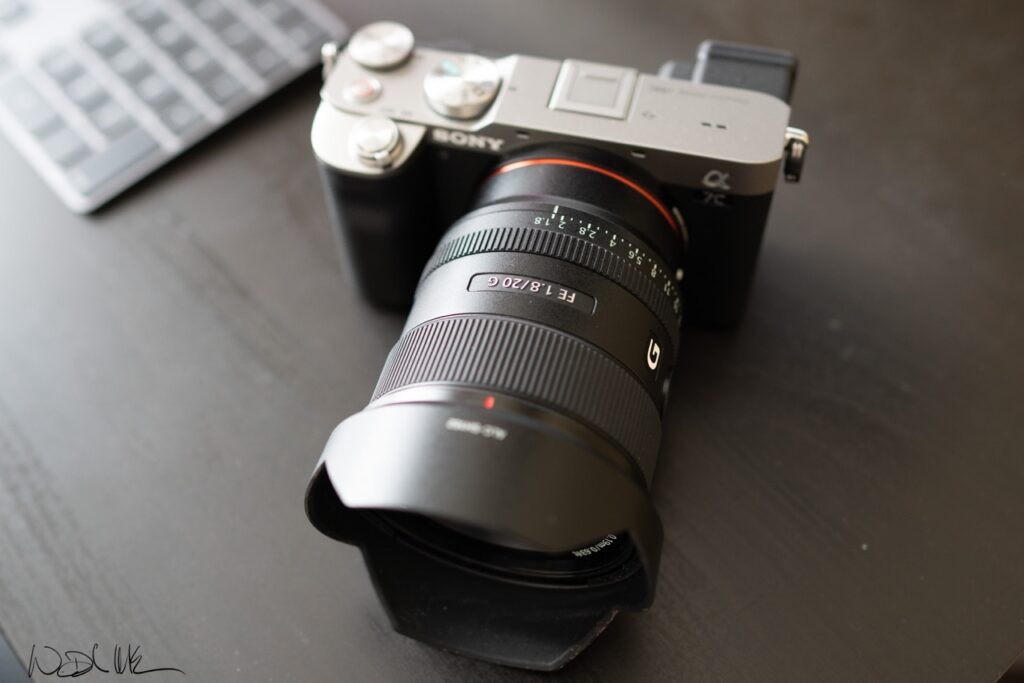
The best lens for astrophotography on the A7RV is the Sigma 14-24mm 2.8. It’s sharp, fast, has minimal vignette, and has some of the best coma performance I’ve seen in a lens. It makes your stars appear as perfect points in the sky.
There are faster lenses like the Sony 20mm 1.8 or 24mm 1.4 GM, and these lenses are the best option if you need something lightweight, but the Sigma 14-24 will actually give you better coma performance, and the price is pretty comparable.
Best lens for image stabilization
The A7RV has incredible stabilization compared to previous Sony cameras, and the best lens for stabilization is the Sigma 60-600mm.
Sigma recently announced the 60-600mm, and it’s not only sharp but one of the most versatile lenses for Sony users, and it offers 6 stops of stabilization.
This is perfect for wildlife or landscape photographers who don’t want to pack in a tripod or want to slow the shutter to reduce noise.
The Sigma 60-600mm is also extremely sharp and the focus is fast and accurate. This will most definitely come in handy with the new AF system for the A7RV that will track trains, planes, cars, and birds.
Sony has a number of other stabilized lenses that have updated firmware to work with the A7RV. This includes the following:
- 24-105 F4 G OSS
- 70-200 F2.8 GM OSS II
- 100-400 GM OSS
- 200-600 G OSS
Just make sure you have the latest firmware updates from sony.
The Perfect lens for the A7RV
Finding the perfect lens for the A7RV can be a challenge and you’re not going to find one lens that will solve all of your problems. I’ve found that using two cameras helps with this problem.
For the A7RV, I recommend investing in a quality zoom lens that will allow you to crop if needed. If money isn’t an issue go for the Sony 70-200 2.8. For the second camera, I usually use a wide-angle prime like the 20mm 1.8 or a 35mm 1.8. This will ensure that you won’t miss the shot in those low-light conditions.
This should be the perfect setup for most of your camera shooting needs.
Summary
The best lenses for the Sony A7rV would depend on the specific type of photography you plan to do. Some popular options for general photography include the Sony FE 24-70mm f/2.8 GM and the Sony FE 70-200mm f/4 G OSS.
For low light and portrait photography, the Sony FE 85mm f/1.4 GM and the Sony FE 50mm f/1.4 are popular choices.
For landscape and architectural photography, the Sony FE 16-35mm f/2.8 GM and the Sony FE 12-24mm f/4 G are highly recommended.
Ultimately, the best lens for you will depend on your specific needs and preferences.
There are a number of different lenses that will improve your photography, but focusing on taking more photos rather than gear is going to make you a better photographer in the end.
I hope this was helpful. Subscribe to stay up-to-date with what’s next in photography!

